A History of Nephrology at UCSF
Nephrology at UCSF has a long and storied history. Although clinical nephrology in San Francisco goes back to the time of Thomas Addis (1881-1949), the quantitative assessments of body fluid volumes and renal function really began in the 1950’s with the studies of Isidore Edelman (1920-2004). In pioneering experiments initiated in the laboratory of the noted surgeon Francis Moore at the Peter Bent Brigham Hospital in Boston, Dr. Edelman used isotope dilution techniques to characterize the volume and distribution of body fluids and electrolytes. He was recruited to UCSF in 1954, with his research laboratory at San Francisco General Hospital (SFGH).
In a series of pivotal studies reported in the Journal of Clinical Investigation Dr. Edelman described his results, which gave rise to what became known as the Edelman equation by which the serum sodium concentration could be viewed as a function of total body contents of sodium, potassium, and water. Eight of these articles emanated from his time at SFGH (then known as San Francisco Hospital), many of them reporting the results of such measurements in patients with edematous disorders. He then moved to the Parnassus Campus of UCSF as the Samuel Nieder Research Professor in the newly formed Cardiovascular Research Institute (CVRI) headed by the noted pulmonary physician Julius Comroe, and turned his attention to the study of the mechanisms of action of aldosterone and vasopressin. These investigations utilized the toad bladder preparation introduced by Alexander Leaf, and led to several key findings of the action of both of these hormones on the transepithelial transport of sodium and water. Later, he became interested in the thermogenic action of thyroid hormone and its role in body temperature regulation. He trained a large number of fellows who continued to work in his areas of interest around the world. One of his first San Francisco fellows was Dr. Frank Gotch (see below); others included Dr. George Porter, who served as Chairman of Medicine at Oregon Health and Sciences University for 17 years, and Dr. Paul Gulyassy, who was appointed Assistant Professor of Medicine in the Division of Nephrology at Moffitt Hospital in 1964 after completing his research fellowship with Dr. Edelman. Other fellows were Darrell Fanestil of UC San Diego and many fellows from abroad: John Funder, Bernard Rossier, Nicolette Farman, and Faramarz Ismail-Beigi, to name but a few. Dr. Edelman left UCSF in 1978 to become Chairman of the Department of Biochemistry and Molecular Biophysics at Columbia University in New York; he received the Homer Smith Award of the American Society of Nephrology in 1980.

Isidore Samuel Edelman, MD
In 1964, Lloyd H. “Holly” Smith was recruited from the Massachusetts General Hospital to be the Chairman of the Department of Medicine. By this time, the field of internal medicine had evolved to the point of being composed of organ-derived subspecialities: at UCSF, the CVRI represented cardiovascular disease, and there was also a very strong Pulmonary Medicine division headed by Dr. Comroe. Dr. Smith set about strengthening the other Divisions, and appointed Dr. Edelman to be Chief of Nephrology. However, Dr. Edelman was subsequently asked to initiate a program in biophysics, so Dr. Smith was then successful in recruiting Laurence E. Earley in 1967 from Harvard Medical School and Boston City Hospital to be the first Chief of the Division of Nephrology. Dr. Earley had a strong interest in the physiology of sodium metabolism and the mechanisms of edema formation. He was successful in recruiting two other prominent nephrologists to the program in the following year. Dr. Robert W. Schrier came from the Walter Reed Army Institute of Research to the Division at Moffitt Hospital in 1969, and Dr. Barry M. Brenner came from a stint in the NIH laboratory of Dr. Robert Berliner to be the Chief of the Division of Nephrology at the Ft. Miley VA Hospital that same year. Each of these three investigators established his own independent research program and trained fellows who became independent investigators in their own rights, and each served later as president of the American Society of Nephrology, Dr. Earley in 1977, Dr. Schrier in 1982, and Dr. Brenner in 1986. Dr. Schrier left UCSF in 1972 to become the Chief of Nephrology, and subsequently Chairman of the Department of Medicine at the University of Colorado from 1976 until 2002. Dr. Earley left in 1973 to become Chairman of the Department of Medicine at the University of Texas San Antonio and in 1977 at the University of Pennsylvania, where he continued and strengthened the already well-known Division of Nephrology and was a revered chairman until he stepped down in 1990. Dr. Brenner left in 1976 to go to the Peter Bent Brigham Hospital (later named the Brigham and Women’s Hospital) where he became the Chief of the Division of Nephrology and Samuel Levine Professor of Medicine at Harvard Medical School. The transcripts of interviews with these giants of Nephrology posted on this website attest to the importance of their time at UCSF to their subsequent careers. They all worked together to establish a strong integrated program in Nephrology among the three UCSF hospitals, which included a NIH-funded fellowship training program, clinical training at each of the hospitals, a weekly combined Renal Grand Rounds, and a visiting professor program called the University Program in Nephrology through which the most distinguished academic nephrologists were invited to give state-of-the-art lectures in their areas of expertise to the community of Bay Area nephrologists. Dr. Earley’s laboratories were immediately adjacent to those of Dr. Edelman, and their common interest in the physiology of electrolyte transport and metabolism led to research collaborations and the formation of the Bay Area Transport Society, at which fellows and visiting scientists could present the results of their research at monthly meetings.
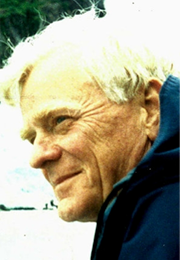
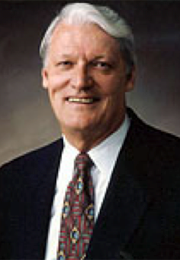
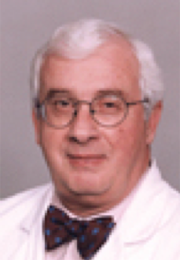
Laurence Elliott Earley Robert W. Schrier, MD Barry M. Brenner, MD
While a major emphasis of these investigators was on laboratory research in renal physiology and electrolyte metabolism, clinical nephrology was also a prominent component of activity. In the Division at Moffitt Hospital, James Hopper, MD was a pioneer in the use of the percutaneous renal biopsy in the diagnosis of parenchymal renal disease and taught the technique to generations of renal fellows.
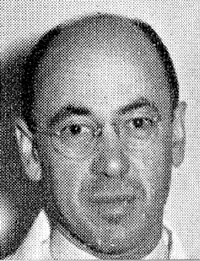
James Hopper, Jr., MD, 1910-1990
Hemodialysis as a treatment modality for end stage renal disease became available on a widespread basis in the latter part of the 1960’s, and the State of California established two centers, one at Los Angeles County Hospital and the other at UCSF, to provide dialysis treatments for California citizens who could not otherwise afford them. This led to the establishment in 1967 of the Northern California Artificial Kidney Center, which later became the University of California Renal Center (UCRC) at San Francisco General Hospital. Dr. Gulyassy moved from the Division at Moffitt Hospital to become Chief of the Division at SFGH and oversee this new dialysis unit. He continued his research on the metabolism of cyclic AMP, and also studied amino acid transfer during dialysis and the effect of uremia on protein binding of amino acids, particularly trytophan. One colleague in the Division was Dr. Frank Gotch, who had been one of Dr. Edelman’s first research fellows at SFGH, and who shared with him a deep interest in applying quantitative principles to problems in clinical medicine. He was conducting research on the characteristics of a novel hollow-fiber artificial kidney, and recruited the assistance of a young engineering PhD graduate from UC Berkeley, John Sargent. Together, they laid the groundwork for the quantitation of solute removal during hemodialysis which permitted them to define an adequate dialysis treatment based on urea kinetics. This approach continues to be used around the world and has become the standard for determining the adequacy of the dialysis prescription (as Kt/V). In 1972, Dr. Gulyassy left SFGH to become the Chief of the Division of Nephrology at UC Davis, and Drs. Gotch and Sargent moved their program to the Dialysis Treatment and Research Center at Ralph K. Davies Medical Center in San Francisco. Dr. Gotch was the second recipient of the Belding H. Scribner Award of the American Society of Nephrology in 1996 for his work in quantitating the adequacy of dialysis by use of urea kinetics. He made a presentation at UCSF Renal Grand Rounds on November 16, 2011 titled “The History of Dialysis in San Francisco”.
“The History of Dialysis in San Francisco”, UCSF Renal Grand Rounds, November 16, 2011
The Division at Moffitt/Long Hospital
The departure of Dr. Earley in 1973 was quickly offset by the recruitment of Dr. Floyd C. Rector, Jr. from the University of Texas Southwestern Medical Center that same year. Dr. Rector established a premier research program that quickly became a magnet for numerous scientists interested in the study of renal physiology and solute and water transport using micropuncture and tubular perfusion techniques. Among these were Christine Berry, PhD, David Warnock, MD, Martin Cogan, MD, Robert Alpern, MD, Harlan Ives, MD, PhD, and Alan Verkman, MD, PhD. These and other investigators made seminal breakthroughs in epithelial transport mechanisms, and in most cases have gone on to become prominent leaders in academic nephrology. Dr. Rector served as president of the ASN in 1977 and received the Homer Smith Award in 1982; he became Chairman of the Department of Medicine at UCSF in 1989. Dr. Alpern moved to become head of the Division of Nephrology at UT Southwestern; he served as president of the ASN in 2000, received its John P. Peters Award in 2008, and is currently Dean of the Yale University School of Medicine. Dr. Verkman carried out seminal work on aquaporins and urea transporters in kidney and red blood cell membranes, for which he also received the Young Investigator Award, in 1993; he has expanded his research efforts to studies on the cystic fibrosis transmembrane conductance regulator (CFTR) and to a large program in drug discovery. The overlap of Dr. Rector and Dr. Brenner in San Francisco led to another felicitous collaboration, the writing of the textbook The Kidney, which quickly became the foremost comprehensive textbook of nephrology, and recognized as Brenner and Rector’s The Kidney. The first edition was published in 1976, and it is now in its 9th edition (2012).
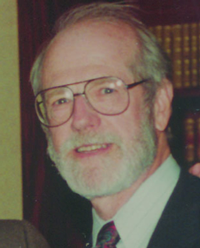
Floyd C. Rector, Jr., MD
When Dr. Rector became Chairman of Medicine, Dr. Ives was appointed Chief of the Division at UCSF, acting in this role until a bicycling accident forced him to step down in 1998. During his tenure, he continued his basic research in cell signaling pathways and cellular interactions with extracellular matrix while expanding the area of clinical research in the Division. Dr. Glenn Chertow was recruited from the Brigham and Women’s Hospital in 1998 and established a strong profile of clinical research spanning end-stage renal disease, acute kidney injury and renal nutrition. He attracted a cadre of fellows who were drawn increasingly to clinical investigations in nephrology. Dr. Chertow in turn brought Chi-yuan Hsu, MD, to UCSF from Massachusetts General Hospital, who quickly established his own independent program of clinical research focusing on chronic kidney disease. Among Dr. Chertow’s many contributions was his service as the Principal Investigator of the Frequent Hemodialysis Network, a clinical study the results of which are still being published. Dr. Chertow was recruited to be the Chief of Nephrology at Stanford University School of Medicine, assuming this role in 2007. After Dr. Ives’ accident, Dr. William Amend became Interim Chief of the Division while a national search was conducted for a permanent Chief. This search resulted in the appointment of Dr. Stephen Gluck from the University of Florida as Division Chief in 2002. Dr. Gluck had made important contributions in the area of renal metabolism related to acid-base balance and the study of proton-ATPases, for which he had received the Young Investigator Award from the American Society of Nephrology in 1992.
In 2007 Dr. Hsu was appointed as Chief, a position he holds to this day. His research encompasses the causes and consequences of chronic kidney disease, including acute kidney injury. He has become an important mentor for fellows interested in pursuing outcomes and epidemiological research.
The Division has also been strengthened by the contributions of Drs. Curtis Morris and Anthony Sebastian, who have made important studies of the renal tubular acidoses and conducted meticulous balance studies examining the role of dietary nutrients in shaping renal metabolism and excretory function. Dr. Morris has also been a leader in both animal and human studies focused on the dietary constituents sodium, chloride, potassium, bicarbonate, and calcium in the regulation of blood pressure in normals and hypertensives. Drs. Morris and Sebastian shared in receiving the Scribner Award from the ASN in 2002. The areas of interest and contributions of current faculty members in the Division are summarized on the Division web page http://nephrology.ucsf.edu/people/.
The Division at the Fort Miley VA Hospital
Dr. Brenner’s arrival at the VA Hospital in 1969 led to an explosion of research into the renal microcirculation and the mechanisms underlying the dynamics of glomerular ultrafiltration. Important fellows participating in these studies included William M. Deen, PhD, now the Carbon P. Dubbs Professor of Chemical Engineering at Massachusetts Institute of Technology, Bryan Myers, MD, for many years the Chief of Nephrology at Stanford University School of Medicine until his retirement in 2006, and Chris Baylis, PhD, currently the J. Robert Cade Professor of Physiology and Director of the Hypertension Center at the University of Florida. One of Dr. Brenner’s early recruits was Allen I. Arieff, MD, who headed the chronic dialysis program and brought to the Division his research interest in the pathophysiology of uremia. When Dr. Brenner assumed his position at Harvard Medical School in 1976, Dr. Arieff was appointed Chief of the Division and expanded his research focus to the deleterious effects of dysnatremias on CNS function. He recruited Dr. Michael Weiner from the Palo Alto VA Hospital and Stanford to be the director of the hemodialysis unit. Dr. Weiner’s research was initially in ion transport, but moved to the newly emerging field of magnetic resonance spectroscopy which could be used for the study of energetics in intact cells, organs, and animals, including humans. His application of this approach has led to many important insights into renal, cardiovascular, and particularly brain disease.
In 1983, Dr. Warnock moved from Moffitt-Long Hospital to become the Chief of the Division. His research was directed at the mechanisms of ion transport across renal cell membranes, with particular emphasis on proton and bicarbonate transport, using a variety of techniques; many of his studies from this era were carried out in collaboration with Dr. Allan Pollock, who joined the faculty at the VA on completion of his fellowship training at UCSF. Another successful recruitment during this time was that of David Lovett, MD from the University of Washington. Dr. Warnock left the VA to become the Chief of Nephrology at the University of Alabama Birmingham in 1988. This allowed Dr. Martin Cogan to be appointed Division Chief, moving over from the Moffitt-Long Division. Dr. Cogan’s research utilized in vivo tubular perfusion to study the mechanisms of proximal tubular bicarbonate and chloride reabsorption and the effects of angiotensin II on proximal tubular function, research which was acknowledged by his receipt of the Young Investigator Award from the ASN in 1988. His tragic and untimely death in 1995 was a great loss not only for UCSF but also for the national and international community of nephrologists and renal physiologists. Dr. Lovett was then appointed the Chief of the Division at the VA Hospital, a position he holds to this day. His research focuses on mechanisms of renal fibrosis and the role of matrix metalloproteinases in chronic kidney disease, using cell and molecular biological and genetic approaches; he has continued the excellence in research productivity and training established by his predecessors. Dr. Lovett recruited Dr. Kirsten Johansen to his Division upon her graduation from the UCSF Nephrology Fellowship Program in 1997. She is the Director of Dialysis at the Fort Miley VA Hospital and has an active clinical research program focused on frailty in patients with kidney disease and the benefits of exercise and pharmacologic interventions to improve musculoskeletal function in these patients. Her research involves continued collaboration with former UCSF Nephrology colleagues Dr. Chertow and Dr. Kaysen (see below). She also is an important mentor for fellows in the Program who are interested in patient-centered research careers.
The Division at San Francisco General Hospital
The departure of Dr. Gulyassy for UC Davis in 1972 led to a search for a new Chief of the Division at SFGH. Dr. Michael H. Humphreys was recruited to this position, arriving in the summer of 1973. He had been a research fellow with Drs. Earley and Schrier at UCSF and shared with them an interest in sodium metabolism, edema formation, and mechanisms of salt-sensitive hypertension. His research identified the importance of renal resistance to atrial natriuretic peptide (ANP) in states of pathological sodium retention such as nephrotic syndrome and cirrhosis of the liver, and documented a previously unrecognized role of the pituitary hormone γ-melanocyte stimulating hormone (γ-MSH) in the integrated response to a high sodium diet. As mentioned above, the Northern California Artificial Kidney Center (later the University of California Renal Center) had been established at SFGH in 1968, and Dr. Patricia Schoenfeld became its Medical Director after the completion of her fellowship training at SFGH under Drs. Gulyassy and Gotch. She remained in this position until she stepped down in 1997 and retired in 1999. She was an expert clinician in the field of end stage renal disease, and used her extensive clinical experience to guide studies of nutrition, nitrogen balance, drug metabolism, and vitamin D management in dialysis patients.
To expand the activities of the Division, George Kaysen, MD, PhD, was recruited from Albert Einstein College of Medicine in 1977. He set up a laboratory program in albumin metabolism in uremia and nephrotic syndrome that complemented some of the clinical research taking place in the Division. He left SFGH in 1983 to become the Chief of Nephrology at the Martinez VA Hospital, and later, the overall Chief at UC Davis, where he has continued to make important contributions to protein and lipid metabolism in kidney disease. Burl Don, MD was a fellow and then faculty member in the program and did clinical research with Dr. Morris Schambelan, the Chief of the Division of Endocrinology at SFGH. They were interested in the renin-angiotensin system in health and disease, and collaborated with Dr. Kaysen to study the mechanisms underlying nephrotic proteinuria. Dr. Don became the Medical Director of the UC Renal Center in 1997, and was recruited to be Director of Clinical Nephrology in Dr. Kaysen’s division at UC Davis in 1998, a position he continues to hold. With his departure, Rudy Rodriguez, MD, was appointed Director of Clinical Nephrology as well as Medical Director of the UCRC at SFGH. He had been a Renal Fellow in the program from 1992-95 before joining the faculty at SFGH, and became a very popular teacher and clinician. He left in 2007 to be the Chief of the Division of Nephrology at the VA Puget Sound Health System and Professor of Medicine at the University of Washington. He took with him two other graduates of the UCSF Nephrology training program, Yoshio Hall, MD, an Assistant Professor in the Division at SFGH, and Ann O’Hare, Assistant Professor in the Division at the VA Hospital.
Another successful addition to the Division at SFGH was David Pearce, MD. He completed his fellowship training here at UCSF in 1989 and then spent three years working in the biochemistry lab of Dr. Keith Yamamoto before joining the Division as Assistant Professor in 1993. He established a research program in laboratory space at the new Mission Bay campus with a focus on the molecular physiology and regulation of the epithelial sodium channel in the renal collecting duct and the mechanisms of aldosterone action. When Dr. Humphreys stepped down as Chief of the Division in 2003, Dr. Pearce was the obvious choice to succeed him, and he remains in this role; his trainees have moved on to positions elsewhere here at UCSF and at Stanford University and the Oregon Health and Sciences University; he was elected to the Association of American Physicians in 2013.
Summary
This brief overview of the evolution of the Division of Nephrology at UCSF leads to several generalizations about the program. From the earliest days of Nephrology as a distinct subspecialty in the field of internal medicine, as a result of the initial leadership of Dr. Earley and and the support of Dr. Edelman, the program has been marked by excellence in research, clinical care, and training. Many trainees have gone on to have successful careers in academic nephrology, whether here at UCSF or elsewhere, and it is perhaps noteworthy that as of this writing (July 2013) the Nephrology Division Chiefs at the four other UC Schools of Medicine have all begun their careers at UCSF: Dr. Ira Kurtz (UCLA), Dr. Kamyar Kalantar-Zadeh (UC Irvine), Dr. Joachim Ix (UCSD), and Dr. George Kaysen (UC Davis). This is a reflection of the larger fact that trainees and faculty members in the Division leave UCSF to assume leadership positions in Nephrology at other academic institutions. Finally, UCSF has been able to nurture a large proportion of trainees motivated to pursue a career in academic medicine by providing junior faculty positions and support as they begin their careers as independent physician-scientists.
By Michael H. Humphreys, MD, Professor Emeritus of Medicine, 2013
Division of Nephrology, San Francisco General Hospital
